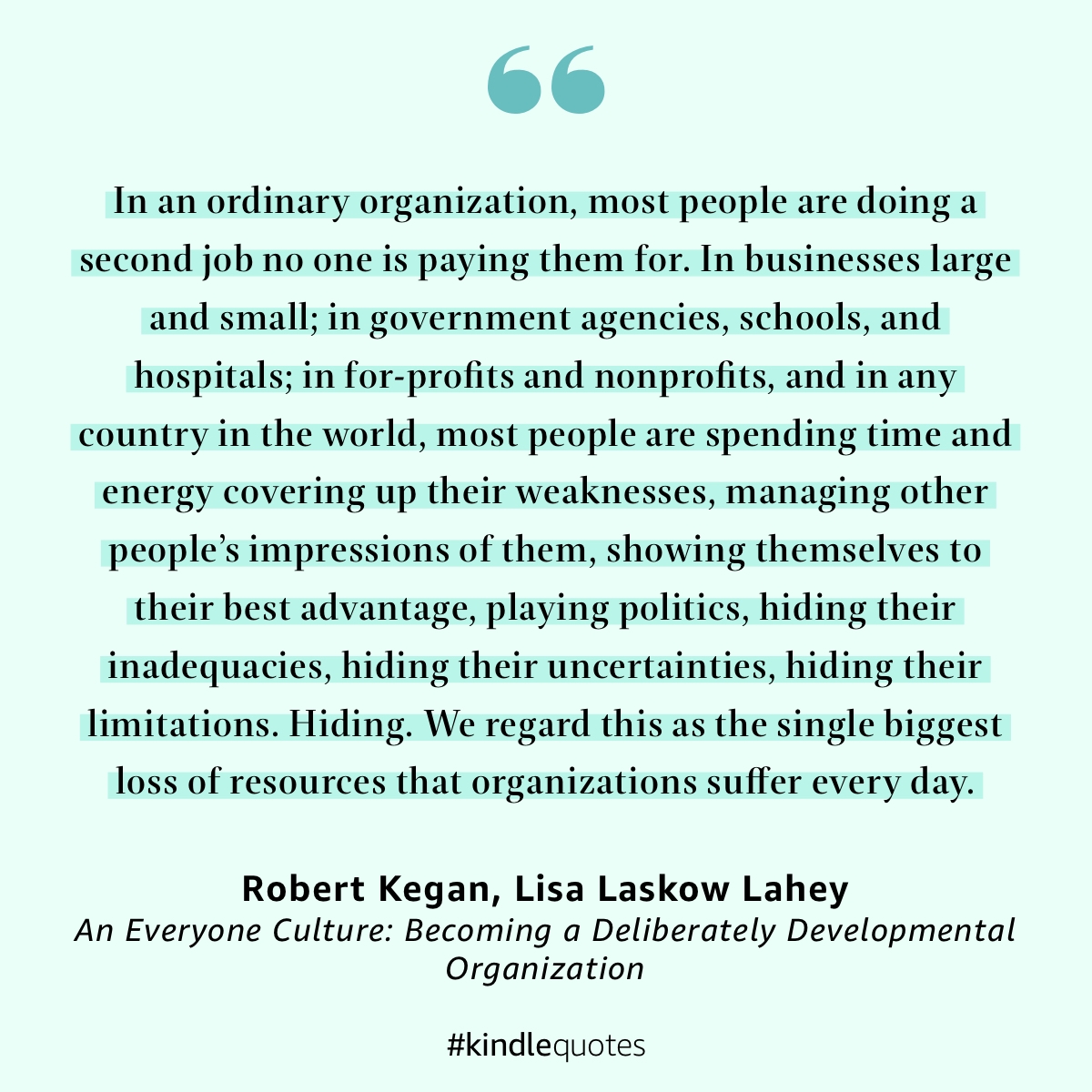
I work with leaders up and down organizations and the theme referenced in this quote comes up frequently. This is especially pungent now that COVID’s impact has laid bare the toll of working the second job of trying to look good all the time when compounded by the other jobs and stressors the pandemic laid on us.
It takes too much energy to keep up the facade.
Perhaps it’s why so many people are willing to leave their stable and steady (yet unfulfilling) jobs to take a chance at something that fits the complexity and stress of their lives better, or gives them a shot at feeling some sort of fulfillment now. When the people I coach and mentor start to see the effects of this second job, many of them are unwilling to put up with it. In a world that is uncertain and increasingly unstable, where the facades become even more flimsy, it requires more and more energy to look like you have it all together and constantly manage other people’s impressions. It’s just too exhausting.
I’ve been thinking about this concept of the second job related to organizations as a whole. Maybe it applies there, too.
Maybe organizations are also expending incredible energy to keep up the facade.
I see organizations in constant turmoil trying to react to supply chain interruptions that make it near impossible to build their product, yet also pouring on the pressure because “we have to fill all our orders and meet our targets and don’t forget we also have growth targets to hit.” The idea that they could let down the facade of being able to always deliver and always grow no matter the increasingly tough odds does not occur to the organizational consciousness.
I see organizations with a strong empowerment culture, where people enjoy their work and are fueled by collaboration and the achievement of delivering together, yet caught in the dynamic of expecting frequent overtime and heroic efforts because “we all pitch in together.” The idea that they could own up to the damage of this dynamic in their culture doesn’t occur to the organizational consciousness. It doesn’t even see it. The organizational consciousness is too invested in maintaining everyone else’s impression of it as a great place to work.
If the organization, as a whole, is spending tremendous energy to work the second job, what does this mean for the people in the organization? Does it mean they are now working three jobs?
Job 1: the one they were hired for and the one that has the chance of offering balance, fulfillment and achievement.
Job 2: hiding their own inadequacies, uncertainties, limitations and making it seem like everything is OK.
And, Job 3: hiding their organization’s inadequacies, uncertainties, limitations and making it seem like everything is OK.
It seems that a whole lot of energy and attention is bound up in performing Jobs 2 & 3 that could be put to much better use if focused on Job 1.
Our habits of hiding run deep.
Our habits of hiding run deep because they were a useful coping strategy in a simpler business world. The business world we operate in now much more complex and volatile — to the point that our habits of hiding are working against us. How can we liberate the energy and attention spent on the hiding required to perform Jobs 2 & 3 and put it to better use? I imagine the “answer” to that question is as unique as each organization and each set of Leaders. But, I think there is a clue.
The clue comes in one word: transparency.
Transparency is a core value of agility and is a benefit that a myriad of agile practices produce. It is possible to get more transparency by getting better at agile. That seems like a fruitful place to start.
The deeper “how” of getting more transparency and reversing the habits of hiding, however, will be specific to each organization and each set of Leaders.
To help think about this, I pose these questions as a start to improving the level of transparency in your context:
For you, as a leader:
How can YOU make it safe for people to tell you the truth so everyone can work with with what’s really happening?
For your org:
Where in the org’s operation do we need to increase Transparency so that we can Inspect and Adapt?
What metrics or other incentives are encouraging “hiding”? How can they be changed to encourage transparency?
The quote is worth repeating so I’ll leave you with it:
In an ordinary organization, most people are doing a second job no one is paying them for. In businesses large and small; in government agencies, schools, and hospitals; in for-profits and nonprofits, and in any country in the world, most people are spending time and energy covering up their weaknesses, managing other people’s impressions of them, showing themselves to their best advantage, playing politics, hiding their inadequacies, hiding their uncertainties, hiding their limitations. Hiding. We regard this as the single biggest loss of resources that organizations suffer every day.
— An Everyone Culture: Becoming a Deliberately Developmental Organization by Robert Kegan, Lisa Laskow Lahey






